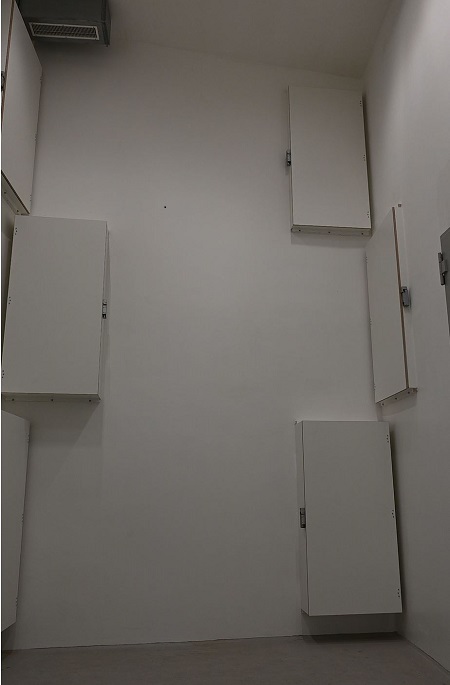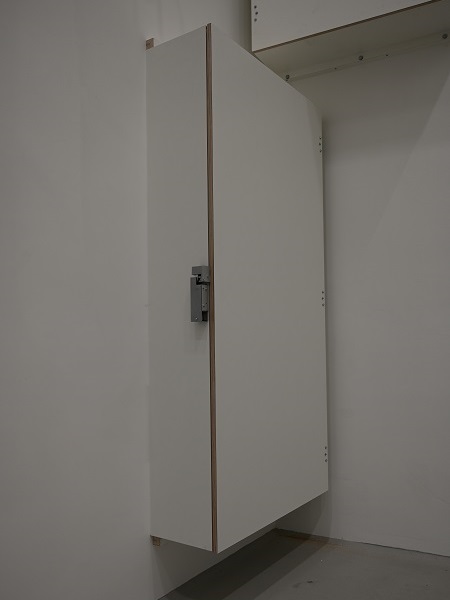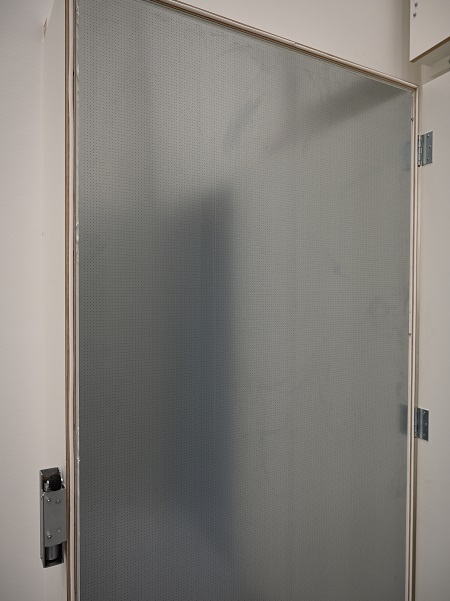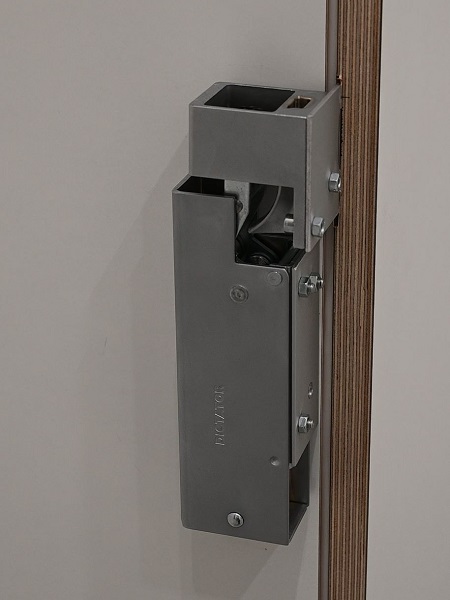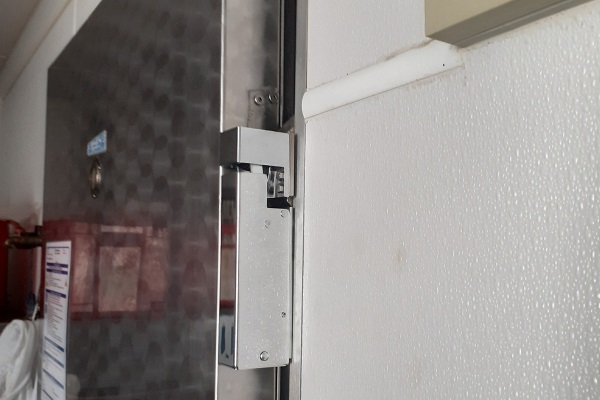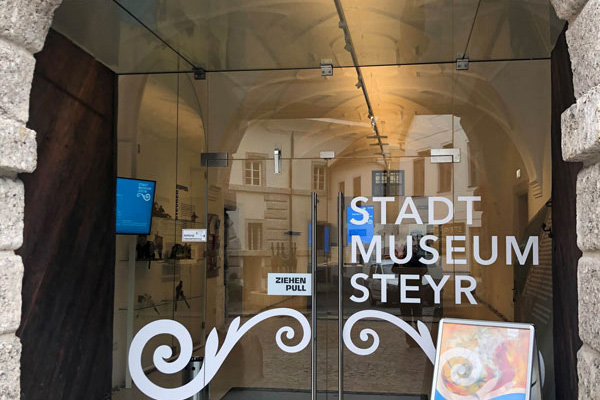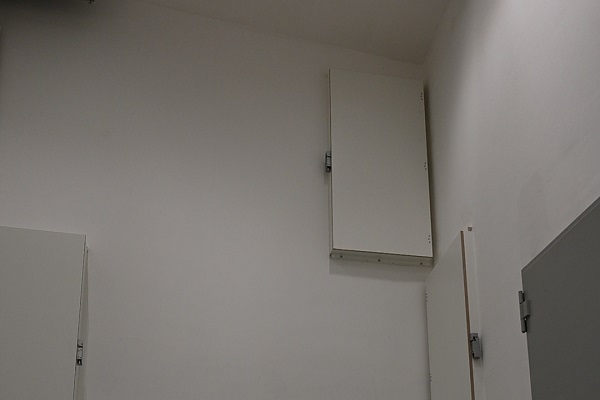The door dampers VS 2000 have helped to reduce noise disturbances for decades – now they also support machine acoustics research
Special boxes up to the ceiling of a test lab allow measurements of different frequency ranges – but how do you open the doors?
The new acoustics lab of the Technological University Darmstadt on the campus Lichtwiese carries out high-precision acoustic analyses and tests on machines etc. – an important contribution to reducing noise and thus improving the environment.
This requires appropriately equipped measuring rooms, which must also be able to reproduce different acoustic scenarios – without a costly refurbishment.
For one of the measuring rooms, the cabinet maker Rudolf Artus from Darmstadt manufactured special boxes, each of which can absorb different frequency ranges. This is due to their inner lining with different metal sheets and the use of different insulating materials on each of the boxes. The results are then measured with highly sensitive microphones.
The problem, however, was that the boxes are placed at different heights on the walls of the very high test room and most of them cannot be reached without tools. Using a ladder every time would be too time-consuming. Mr. Artus therefore needed a solution that would make it possible to open the doors of higher boxes with the help of a simple telescopic rod, avoid vibrations when closing them, and hold the doors securely shut.
The door damper VS 2000 has been putting an end to annoying noises for a long time – that’s why the acoustics lab is a perfect place of operation for it
Mr. Artus found what he was looking for on the DICTATOR website – even though his application is not the standard. But he immediately saw the potential. On the one hand, the door damper VS 2000 meets the design requirements, as the hook can be easily gripped with a telescopic rod to open the door. On the other hand, when the door closes, the door damper catches it without vibration and pulls it shut, so that it remains securely closed during the tests and does not jeopardize the results. It was also important that the closing force of the door damper is high enough to keep the doors securely closed at all times, but low enough that it is still possible to pull the doors open without difficulty using the telescopic rod.
The door damper was attached to the side in each case: the hook on a mounting plate embedded in the door and the door damper with a mounting bracket on the side of the box. Its performance: perfect! 🙂
In a test chamber of the acoustics lab of the Technical University Darmstadt, there are several boxes of different sizes and equipment on the wall. Once they are opened, different sound frequencies can be measured with them. The only question was how to open and close them effortlessly, even though most of them cannot be reached directly from the ground.

